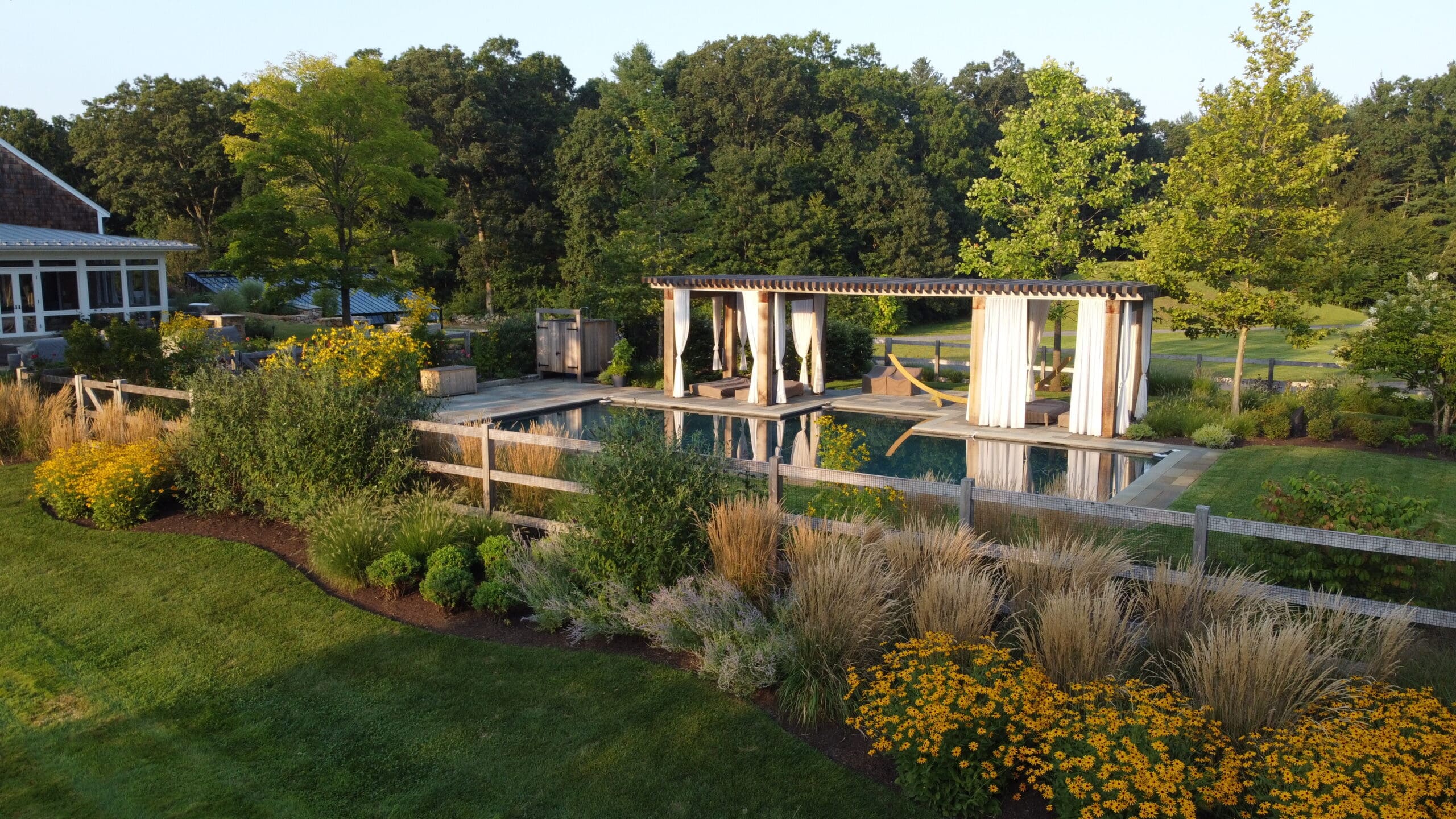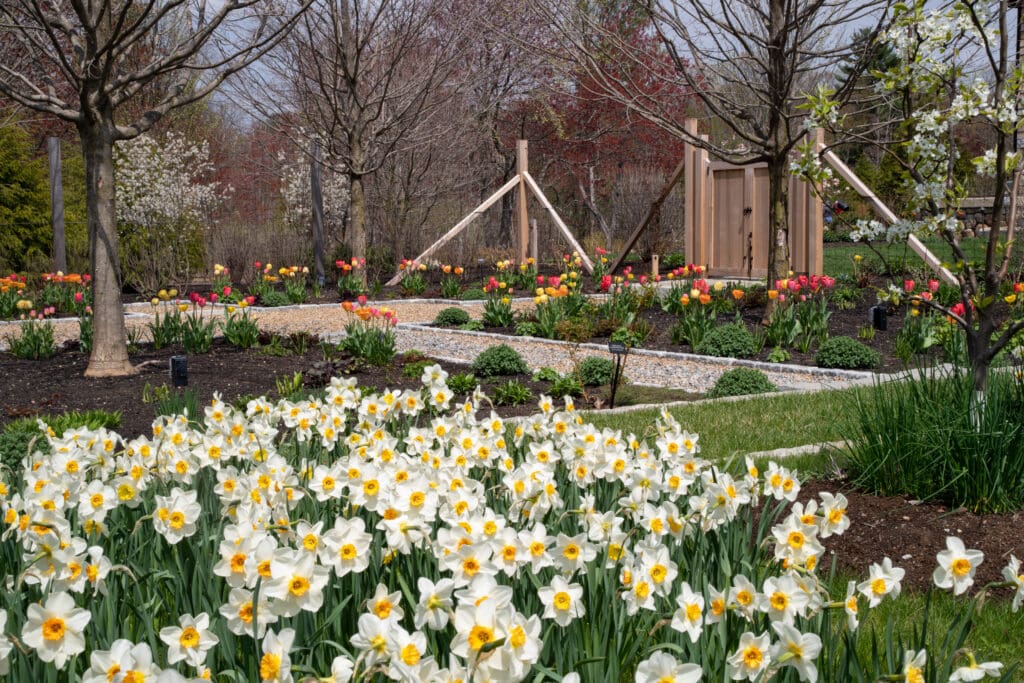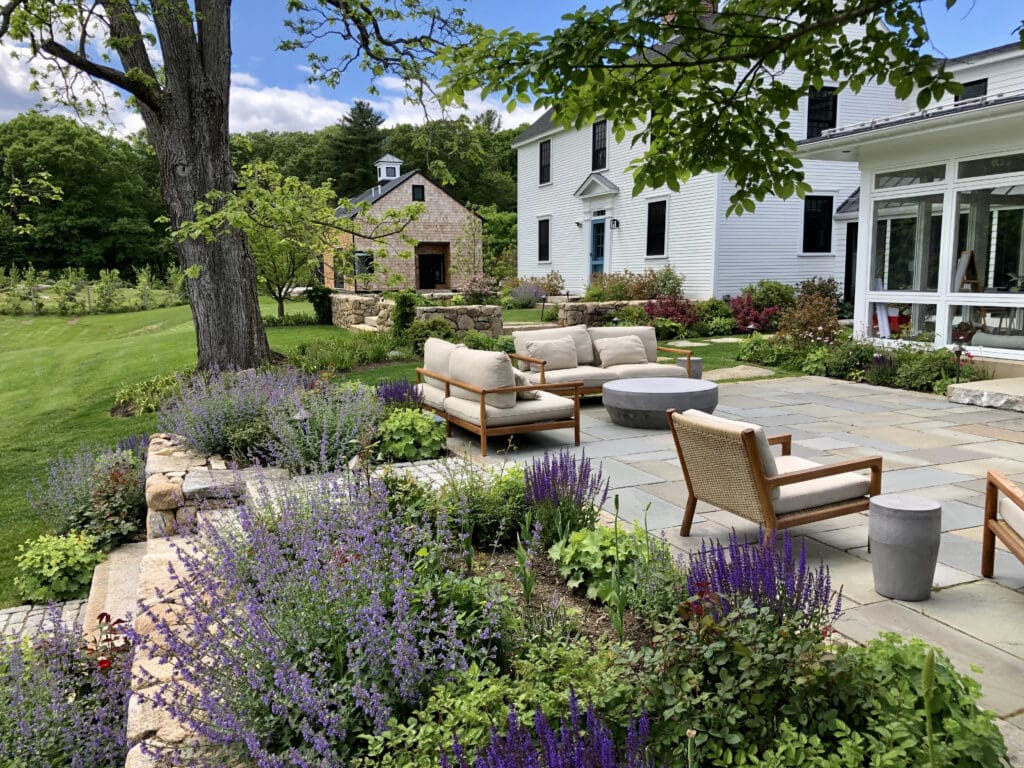
This property in Carlisle, Massachusetts, has everything from wetlands to gardens. For several years, the team at A Blade of Grass, based in Sudbury, Massachusetts, has maintained each area to keep them healthy and looking their best.
Heather Jones, the marketing director and the maintenance division’s senior account manager, shares her thoughts on winning a Gold Award of Excellence for 2023: “We feel honored to have won an Award of Excellence for this project. We put a lot of time into caring for the property…hours and hours, and it’s really rewarding to share the award with those who care for it, such as our crew and the crew leader, the mowing teams, and everyone involved. We currently have our plaque hanging in the maintenance foyer for everybody to see. It shows all the hard work that we have done, the thoughtful care, and creativity. We are proud to have won an award for the design and installation of the project as well.”
Working on Wetland Area
When the team began maintaining this property, restoring the wetland was a significant project, as dead trees and invasives were impacting the ecosystem and causing the site to look unattractive.

“The wetlands were covered with bittersweet, poison ivy, and goutweed, and many of the trees were dying due to the vines strangling them,” Jones says. “It was a long process working with the town and a company specializing in wetland permitting and wildlife protection, but eventually, we got permission to cut down the dead trees.”“We had to leave about 8 feet of the trunk, and the rest of the trunk we cut up and rolled around and left on the wetlands, then we removed as much of the bittersweet as we could by hand pulling and cutting.”
Much of this initial work occurred in the fall, with more cleanup in spring as the remaining invasives emerged.
“The goutweed really took off, so we covered it with black plastic and left it on for one year,” Jones says. “It was unsightly, but the client understood it was the process to kill it off. We looked at several techniques and felt this was the best. It was tricky because we had to secure it down, and we used logs and rocks and whatever we could find to secure the plastic cover. Then, over that year, we kept monitoring the vines to make sure nothing grew back, and if we did see something, we would either pull it or cut it and then paint the approved wetland herbicide on the stem.”
As the cleanup progressed, they focused on adding native perennials, trees, shrubs, and groundcovers to the wetland. Once the team had an approved list of species, they started installing plants toward the interior areas of the wetland while leaving the plastic in certain areas for another year to control the existing goutweed.
After removing the plastic, they added groundcovers and perennials to those areas. While most of the goutweed is gone, they still find a few popping up from time to time during their routine checks of the wetland. Over the last couple of years, new plants have filled the area and brought new life to this challenging spot.
Caring for the Gardens
Another area that requires focus is the many gardens on the property, which include numerous planting beds, seasonal displays, and a vegetable garden.

“Initially, our client preferred a very natural look in the garden beds with a mix of perennials and annuals,” Jones says. “We also use a lot of bulbs, and when we planted them, we scattered and mixed the varieties, so it looked natural.”
With four seasons of displays, the team can showcase their creativity.
“One year, for the holidays, we used firewood in the planters, and next to it, we had winter greens and red branches, which was fun,” Jones says. “We try to mix it up using different items for summer. Last year, we had playful beehives tucked into a mix of tropicals and colorful annuals.“In early spring, we typically find some fun branches with moss, so we keep things unusual and unique while mixing them up every year.
A few years ago, the owners began having issues with their well, causing the maintenance team to lose access to the irrigation system. To address this issue, A Blade of Grass is redesigning many beds to use more perennials and fewer annuals.
“We plan to use a lot of natives and try to find the most long blooming perennials we can,” Jones says. “Currently, we have a lot of nepetas, cornflower, rudbeckia, alchemilla, ornamental grasses, perennial hibiscus, and roses. Lots and lots of roses.”

Each week, a crew of 3-9 members visits the property to perform routine maintenance and other tasks, like treating ticks and mosquitoes, which can be a problem with the nearby wetland. An organic spray is applied along the property’s perimeter in the early morning to minimize risk to pollinators.
For Jones and her team, this project has sparked lots of excitement among the homeowners.
“One of the most rewarding parts of the project is seeing the family enjoy their property,” Jones says. “They have young children and spend a lot of time outdoors while playing in the garden and the fields. Their vegetable garden yields a lot of produce throughout the summer, and their chef has more than enough to cook with. Sometimes, they bring the harvest to neighbors, donate to a food pantry, or even give the produce to their sheep and goats.”
Interested in participating in the Awards of Excellence? Enter your projects by July 29, 2024.



